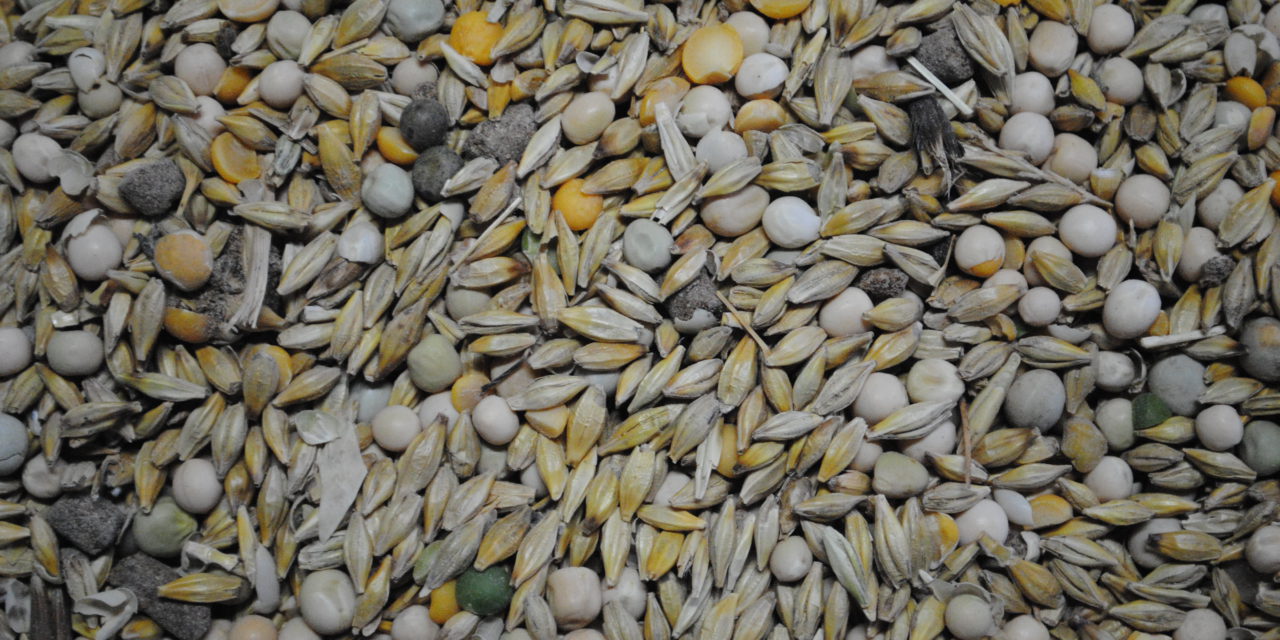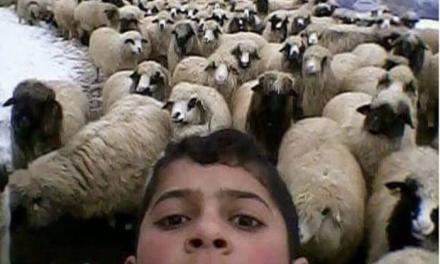This post is also available in:
![]()
![]()
![]()
Dairy sheep farms are net producers of proteins for human feeding
Factsheet name: Dairy sheep farms are net producers of proteins for human feeding
Need / Issue: Feed/food competition
Introduction
Ruminants are often singled out as eating more food for human consumption than they produce. However, these claims need to be qualified. When only considering food that is fit for human consumption, the results indeed are different. For instance, humans do not eat grass or any co-products that the food industry produces. A new approach has shown that 89% of the protein consumed by ewes is not edible by humans, thus not competing with human food. For 1 kg of human edible protein consumed by sheep, they produce on average 1.16 kg of human consumable protein in their milk and meat.
Methodology
The methodology used was created by the French GIS ‘Élevage Demain’ (renamed GIS Avenir Élevage). The objective was to calculate the conversion efficiency of protein and crop-based and animal energy into protein for different husbandry systems. The ratio between the animal products and crop-based consumption needed to produce them is calculated on the farm. This ratio is called ‘gross efficiency’ and is calculated when all the livestock productions (meat and dairy) and all the crop-based feed (any form of grass, grain, co-products, etc.) are taken into account. ‘Net efficiency’ is calculated when only considering the human-edible part of animal feed. In this article, the word ‘edible’ refers to human food. For each feedstuff in a ration, two new characteristics have emerged: Human-Edible Protein (PPC) and Human-Edible Energy (PEC). For instance, grass has a PPC of 0% while soft wheat has a PPC of 66%.
The Diapason database (INOSYS – Réseaux d’élevage, Idele, Chambres d’agriculture), made up of reference farms, was used to determine on a national level the gross and net efficiencies of energy and protein conversions of the French livestock systems. The processed data corresponds to the year 2012 and 2016 for the three dairy ruminant sectors. For sheep production, they concern a collection of data (343) from 108 farms (farm x year). Only the farms that provided data were used. The 11 feeding systems in the database were grouped to allow interpretation of results. The farms were then separated into five groups: Corsica, Pyrénées-Atlantiques with and without transhumance, Roquefort region pastoral area and Roquefort region montane and Piedmont region. Based on the agricultural census (Recensement agricole 2010), the results were weighted according to the national representation of each system.
Topic: health/nutrition
Production: Dairy
Animal Category: Adult / Lamb / Replacement
Results
Sheep rations are mostly not edible for humans
It was possible to establish the share of the different non-edible rations by humans by classifying food based on its share of energy or consumable protein. On average, it was found that French sheep farms have 88% of energy and 89% of the protein from animal rations that are not edible for humans. Ewes optimise a vast majority of feedstuff that cannot be optimised for human consumption, turning them into feed with high nutritional value.
Sheep farms are net consumers of energy
Dairy sheep systems have low levels of gross energy efficiency, averaging 0.07 (table 1) and a low variability (standard deviation = 0,01). For every 1 kcal of plant-based food consumed by a herd, only 0.07 kcal is available as output in the milk and meat produced. However, this efficiency improves when the non-human consumable part of the ration is not considered. Dairy sheep systems have average net energy efficiencies of 0.63 (Table 1). The net energy efficiency shows a low inter-system variability for ovine productions, varying from 0.59 to 0.67. For intra-systems however, it remains higher. Choosing the right type of feed consumed by the herd is a potential technical improvement for this criterion.
Sheep farms are net producers of protein
Dairy sheep systems have low levels of crude protein efficiency, averaging 0.13 (Table 1). For every 1 kcal of plant-based proteins consumed by a herd, only 0.13 kcal of protein is available as output in the milk and meat produced. However, this efficiency greatly improves when only considering the non-human consumable part of the ration. Dairy sheep systems have average net protein efficiencies of 1.16 (Table 1). On average, they produce 16% more animal proteins compared to their intake of plant-based protein. The studied systems are net producers of protein for human consumption. On average, the inter-system variability is 0.54, but for intra-systems, it remains higher. Choosing the right type of feed consumed by the herd proves, once again, to be a potential technical improvement for this criterion.
Table 1: Energy and protein conversion efficiencies of dairy sheep farms
|
Feeding system |
Gross energy efficiency |
Net energy efficiency |
Crude protein efficiency |
Net energy efficiency |
|
Corsica (n=33) |
0.06 |
0.61 |
0.10 |
1.38 |
|
Pyrenees-Atlantiques with transhumance, (n=46) |
0.06 |
0.60 |
0.10 |
1.28 |
|
Pyrenees-Atlantiques with no transhumance, (n=54) |
0.08 |
0.59 |
0.14 |
1.28 |
|
Roquefort region, pastoral area (n=84) |
0.08 |
0.65 |
0.14 |
1.02 |
|
Roquefort region, montane and piedmont region (n=126) |
0.09 |
0.67 |
0.15 |
1.02 |
|
French weighted average |
0.07 |
0.63 |
0.13 |
1.16 |
Suggestions for improving the net efficiency of farms
The studied dairy systems have higher energy and protein conversion efficiencies than the proportion of feed that competes with human food. Grass, whether grazed, foddered or harvested, is a very important factor for increasing conversion efficiency. Grass-based systems (Corsica, transhumant Pyrenees-Atlantiques), in pastures or in summer pastures, have the best results in terms of net protein efficiency (NPE) (Table 1). Similarly, the Pyrenean region shows a higher net efficiency than the Roquefort region, where the quantity of concentrates distributed is higher. On average, the NPEs are still higher than 1 in the Roquefort area of production. This is related to a higher milk productivity, which highlights a good use of rations to produce edible proteins for humans. On average, farms that make greater use of co-products than of raw materials have higher efficiencies. Co-products also have the benefit of having lower proportions of energy and protein for human consumption than raw materials. Finally, a good balance between milk production and feed consumption also promotes net efficiencies.
To put this into practice, an experiment was conducted on two groups of 40 ewes that were fed the same basic ration each day: a mixture of maize and grass silage (Italian ryegrass) and haylage (Italian ryegrass) with equal amounts of dry matter (DM). The control group received regular feed on the farm and was complemented with dehydrated alfalfa, barley, and a commercial concentrate. The test group was fed the ration without ‘competition’ and received dehydrated alfalfa, dehydrated beet pulp and corn-dried distillers grain.
The amount of competing protein was estimated to 6 g/d/ewe for the test group, and 110 g for the control group. Meanwhile, milk production was equivalent, although the experiment found a loss in protein content at around 2 g/l, and a decrease in urea levels at around 90 mg/l.
Conclusion
The current context makes the theme of feed/food competition interesting to observe. While there is no intention to make it a full-on suggestion, it may be pertinent for the farmer to point out that their ewes feed on resources, like grass or co-products, that do not compete with human food. Even with the results of a single experiment, it could also be possible to reduce the proportion of feed competing with human food without any consequence on milk quantity or quality.







